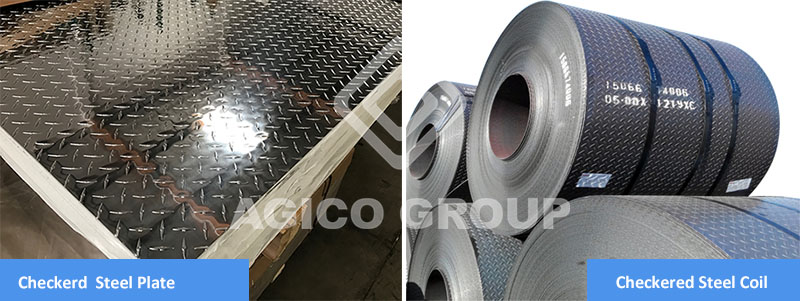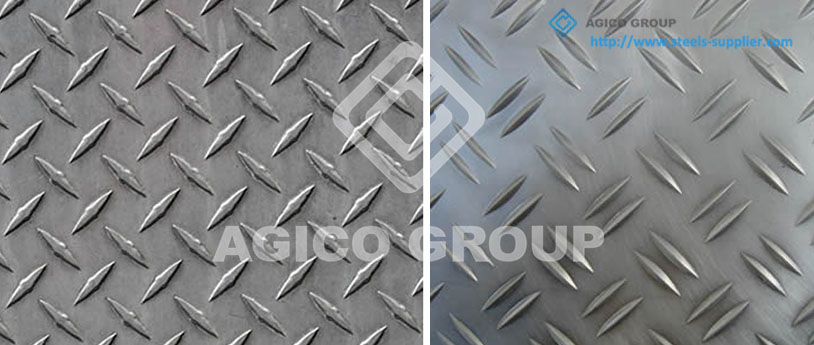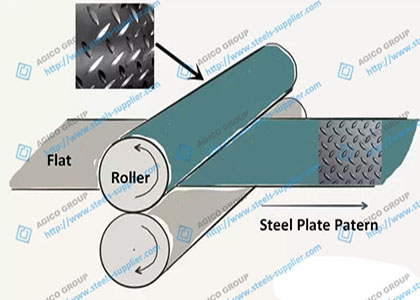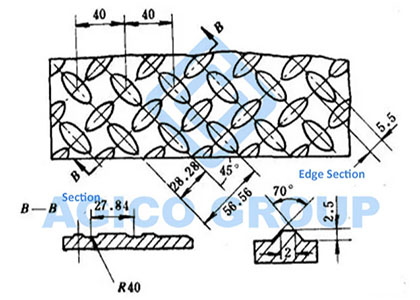
What is Checkered Steel Plate or Diamond Plate
In our daily life, we often see steel plates with concave and convex patterns on the surface,this type of steel plate is called checkered steel plate. They have many advantages such as beautiful appearance, non-slip resistance, enhanced performance and steel saving. It is widely used in transportation, construction, decoration, equipment, floor, machinery, shipbuilding and other fields.
The official name of this steel plate is called "checkered steel plate ", which is usually referred to as hot-rolled checkered steel plate. This is a technique for pressing the surface pattern of a roll onto the surface of a steel sheet by roll press processing. English diamond plate Checkered Steel Plate, flooring sheets and coils, floor plates, etc., refer to this category.
The pattern shape of the checkered steel plate is generally four types of lentils, diamonds, round beans, and oblate shapes. The lentils are the most common in the market. The pattern of the checkered steel plate is only available on the upper surface, and the other side of the steel plate is flat.
Lentils single (left) and lentils (right)

Large steel companies at home and abroad generally have this product, such as Baosteel, Laiwu Steel, Ma Steel and so on. The production equipment of each steel mill is slightly different. The main thickness range is 1.5~16mm, and the width is generally below 1600mm. Currently, the thickness commonly used in the market ranges from 2.0-8mm, and the common width is 1250 and 1500mm. Steel is a standardized product, and the checkered steel plate also has corresponding relevant standards, such as national standard, metallurgical standard, and various steel factory enterprises.
Related standards and grades of checkered steel plates
There are many standards for checkered steel plates. Commonly used are GB/T 3277-1991 pattern steel plate, YB/T 4159-2007 hot rolled pattern steel plate and steel belt, Q/BQB 390-2014 hot continuous rolling pattern steel plate and steel belt. There are many steel plates of checkered steel plates in each standard. The product number of the checkered steel plate is based on the plate number of the substrate plus "H-", such as H-Q195, H-Q235B and so on. Among them, "H" is the first letter of the Chinese pinyin "pattern". Of course, some companies have their own product grades, such as Baosteel's BCP270, BCP340 and BCP400 series.


checkered steel plate technical requirements
The technical requirements of the checkered steel plate are mainly divided into 2 parts: [substrate] and [pattern].
Substrate requirements
-
According to different substrate materials, checkered steel plate products can be divided into four series:
- Carbon structural steel: GB/T 700 medium grades such as Q195, Q215, Q235, etc.;
- low-alloy high-strength steel: GB/T 1591 in the number such as Q345;
- structural steel for hull: GB 712 A, B, D, E and other steel grades;
- High weathering structural steel: The grades in GB/T 4171 are Q295GNH, Q235NH, etc.
Note: If the grade of the checkered steel plate is "H-", the chemical composition will be the corresponding standard for the substrate. For example, the chemical composition of H-Q235B is the same as that of Q235B. If it is a brand without H, the detailed regulations need to refer to the corresponding standard.
Pattern requirements
There are many shapes of patterns, such as lentils, round beans, diamonds, etc. In the case of lenticular patterns, the thickness tolerance and the allowable range of grain height are specified in detail.
Note: The nominal thickness of the checkered steel plate refers to the thickness of the substrate, excluding the height of the pattern. The requirements for the pattern height of the pattern are otherwise specified. The standards are different. For example, GB/T 3277-1991 specifies not less than 0.2 times the thickness of the substrate, while the AGICO specifies the specific numerical range of the grain height in more detail.


